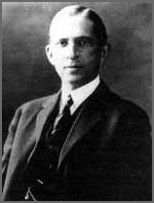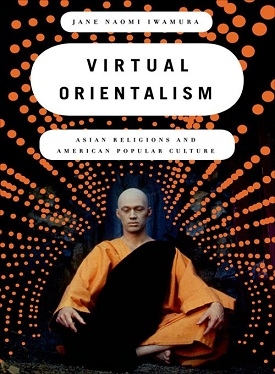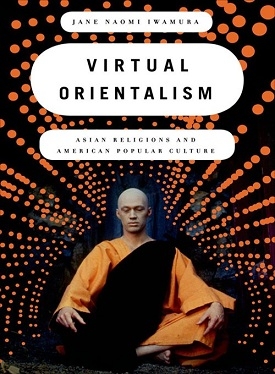

Moderators: Elvis, DrVolin, Jeff
"But corporate executives did not give up the tactic of vigilante groups, and on June 1, 1936, Cowdrick wrote Harry Anderson, G.M's labor relations director, to ask his opinion of the Sentinels of the Republic. Anderson was apparently unaware of Irénée du Pont's support of this organization, but offered his own home-brew alternative. "With reference to your letter of June 1 regarding the Sentinels of the Republic," he replied a few days later, "I have never heard of the organization. Maybe you could use a little Black Legion down in your country. It might help."
The "Black Legion" Anderson referred to was indeed a great help to General Motors in its struggle to prevent auto workers from unionizing. With members wearing black robes and slitted hoods adorned with white skull and crossbones, the Black Legion was the terror of Michigan and Ohio auto flelds, riding like Klansmen through the night in car caravans, bombing union halls, burning down homes of labor militants, and flogging and murdering union organizers. The organization was divided into arson squads, bombing squads, execution squads, and anti-communist squads, and membership discipline on pain of torture or death was strictly enforced. Legion cells filled G.M. factories, terrorizing workers and recruiting Ku Klux Klansmen.
Since 1933 the Black Legion's power had permeated police departments."

"The fact that since the beginning of the war we could produce lead-tetraethyl is entirely due to the circumstances that, shortly before, the Americans [Du Pont, GM and Standard Oil] had presented us with the production plants complete with experimental knowledge. Without lead-tetraethyl the present method of warfare would be unthinkable."

Continues at: http://english.chass.ncsu.edu/jouvert/v5i2/chowdu.htmReview of:
Vijay Prashad. The Karma of Brown Folk. Minneapolis: University of Minnesota Press, 2000.
Current perceptions regarding South Asians in the United States are dominated by a multitude of stereotypes that collide and rebound against one another. South Asians are viewed as hardworking and potentially "productive" citizens but also as essentially different and distant from "American" life and culture. Although this form of othering may sound benign, it is part of a more complex form of racism that includes a portrait of the South Asian as a possible economic threat, willing to cheat honest Americans out of their livelihood (consider the depiction of Apu in The Simpsons).
Moreover, South Asian difference, though seemingly an innocent gesture of exoticization, can be used to deny civic and economic rights.
In his groundbreaking text, The Karma of Brown Folk, Vijay Prashad effectively unpacks some of these stereotypes, providing an excellent historical contextualization of the many layers that determine the complex lives of South Asians. His book, as he puts it, is about "the feeling, the consciousness of being South Asian, of being desi (those people who claim ancestry of South Asia) in the United States. It is also a set of sutras (aphorisms) of the karma (fate) of desis, who must now imagine ourselves within the U.S. racial formation and seek to mediate between the dream of America and our realities" (viii). Prashad's book, however, is not just an archival resource or a series of community vignettes; it is also a call to action, striving "to address the dilemmas of desi life in the United States." In addition, the book "suggests passages to transform [desis'] current aporias" (ix).
One of the greatest strengths of the book is Prashad's historical overview of desi life in the United States and of desis' unique, evolving place in a white supremacist society. Prashad does an excellent job of tracing the roots of some of the racist notions that persist into contemporary times. An early example of racial othering, for instance, had been constructed by American writers, such as Emerson and Thoreau, who had portrayed the East as essentially spiritual and different. These views were exacerbated by turn of the century "popular orientalism," which "paraded out both the ghastly and beautiful mysteries of India as racial specimens that represented the multiplicity of Indian society, entertained U.S. residents, and validated the U.S. way of life in opposition to that deemed to be general in the East" (30). Some examples of these specimens included idols in personal museum collections, spectacles organized by the Barnum circuses, and the Ethnological Congress, which displayed people of "different and (lower) races" (30). Such spectacles were further sanctioned by the "Godmen of the fin-de-siècle who came from India to the United States" (40).
However, Prashad notes that many of these "godmen," including the most famous one, Swami Vivekananda, were disturbed by the American "tendency to view India as solely spiritual." In their eyes, this perception "obscured the devastation wrought on the subcontinent by capitalism and colonialism" (41). Prashad is particularly effective at demonstrating the continuing pattern of these perceptions by focusing at some length on the most prominent contemporary exponent of Indian "spirituality," Deepak Chopra. Chopra, according to Prashad, is a "sly baba" who "is the complete stereotype willed upon India by U.S. orientalism, for he delivers just what is expected of a seer from the East" (48). Unlike Vivekananda, however, Chopra "fails to mention the structural poverty of his homeland, nor does he offer any of criticism of capitalism" (48).




[emphasis added]Henna has helped bring India back home for me. It has brought home to me, and many other South Asian American women, the instability and power of the concept of nation, the ambiguity of cultural possession, and the perils involved in the material processes of “bringing back” a memory or fantasy of belonging. Traveling to the U.S. in the guise of “body art,” henna and other popular markers of “Indo-chic” exemplify the ways in which the use of commodities expresses the contradictions of transnational capital, gendered multiculturalism, and racialized citizenship. (Henna, or mehndi as it is called in Hindi, is the word for a plant, and for henna painting, which is done with a paste from crushed henna leaves and applied, generally, to the hands and feet. Henna is a practice generally done by and for women, particularly for wedding ceremonies, in South Asia but also in North Africa, the Middle East, and South East Asia). The fact that henna has to be applied to the body lends itself to entrepeneurial “body artists” who “perform” or paint mehndi designs for a price.
Henna, and other markers of Indo-chic, have become signifiers for a turn-of-the-millenium Orientalism. The flier by a “henna artist” invokes the”ancient,” “sacred,” and “ritual” practice of henna and uses the motto “Express yourself,” perhaps not accidentally, for it was Madonna who performed one of the most widely publicized spectacles proclaiming India en vogue in her video for “Frozen.” The flyer was produced in a small town in Massachusetts where I did a study of the meanings of Indo-chic outside of the large, metropolitan centers with which its consumption is typically associated, and interviewed several young South Asian and South Asian American women about their views of henna, cultural appropriation, ethnic authenticity, and globalization.
But why the return of Indo-chic now, thirty years after the psychedelic sixties and the quest to tune into India? Certainly India occupies a somewhat different niche in the American cultural economy than it did in the 1960s and 1970s. With the economic restructuring and neo-liberalization policies that have taken place in the past decade, India has been drawn further into global movements of labor, goods, and capital. Multinational corporations in the fashion industry now browse in South Asia for cheap labor, cheap goods, and profitable market trend ideas. The economics of Indo-chic and the vagaries of global capital are clearly one aspect of commodification that is not “digestible” by the discourse of packaged ethnicity, and is left undiscussed in the mainstream media although clearly articulated by youth of South Asian descent. What is also different about 1990s’ Indo-chic is that there are new groups of South Asian Americans who have come as labor migrants to the U.S. on family reunification visas or sometimes as undocumented immigrants, beginning in the 1980s, and who work as taxi drivers, convenience store owners, and domestic workers. The indigestible fact of working-class and lower middle-class South Asian Americans, who are not considered bearers of Indian mysticism or avatars of Indo-chic, is precisely the unassimilable contradiction with which we must grapple.

Modern capitalism began centuries ago and was imposed in America with the invasion of October 12, 1492. This gave way to global plundering and the invention of theories of "races" to justify American ethnocide, the incursion into Africa for the slave trade and the plundering of other continents. These genocides have not ceased and retain power due to transnational capital and military support. This worldwide capitalist exploitation and oppression fuels global warming, leading to the planet’s self-destruction.
This crisis in the development model – capitalist, Eurocentric, sexist and racist – is absolute and is drawing us into the worst socio-environmental climate crisis in human history. The financial, economic, energy, and production crises have worsened structural unemployment, social exclusion, gender and race-based violence, and religious fanaticism all at once. These crises of “capitalist development and modernity” are so numerous and so deep that they constitute a true crisis of civilization, endangering all ways of life. Yet there are those who continue dreaming of changing this model and do not wish to accept that what is in crisis is capitalism, Euro-centrism and its model of the uni-national State, cultural homogeneity, western positive law, developmentalism and the commodification of life.
The crisis of capitalist western civilization forces us to reconstruct and reinvent new and diverse ways for nature, society, democracy, the State and consumption to coexist. For this, new paradigms are necessary, not only making "other worlds possible", but critical. These paradigms are already being built by the first victims of the most barbaric forms of capitalist, colonial, modern and contemporary violence: indigenous peoples and communities, natives, farmers, riverside inhabitants, Quilombolas, Afro-descendents, Garifunas, Caboclos, Dalits, among others, and their children who migrated to the poor slums of the cities; and all the other excluded, invisible and "untouchables" of the planet. We continue resisting, strengthening and updating alternative forms of technological, social, ethical, political, economic, cultural and spiritual order of the human race.
We, the Native Indigenous Peoples, practice and propose: uniting Mother Earth, society and culture. Nurture Mother Earth and to be nurtured by her. Raising water as a fundamental human right and not a commodity. Decolonization of power with the theory "lead by obeying", community self-government, multinational states, self-determination of peoples, unity through diversity and other forms of collective authority. Gender unity, duality, equity and complementarity. Spiritualities rooted in the everyday and the diverse. Freedom from all racial, ethnic, or gender domination and discrimination. Collective decisions regarding production, markets and the economy. Decolonization of the sciences and technologies. Expansion of reciprocity in the distribution of work, products and services. Therefrom produce a new social ethic different from that of the market and colonial/capitalist profit.
We belong to Mother Earth; we are not her owners or plunderers, nor are we her vendors. Today we are at a crossroads: imperialist capitalism has shown itself to be dangerous not only due to its domination, exploitation and structural violence but also because it kills Mother Earth and leads us to the planetary suicide, which is neither "useful" nor "necessary".
The Eros Effect: An Interview With George Katsiaficas
Return to Data & Research Compilations
Users browsing this forum: No registered users and 3 guests